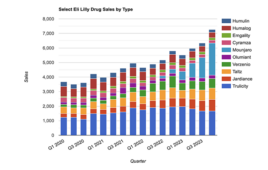The blood from woolly
mammoths—those extinct elephant-like creatures that roamed the Earth in
pre-historic times—is helping scientists develop new blood products for modern
medical procedures that involve reducing patients’ body temperature. The report
appears in Biochemistry.
Chien Ho and colleagues note that
woolly mammoth ancestors initially evolved in warm climates, where African and
Asian elephants live now, but migrated to the cold regions of Eurasia
1.2 million—2.0 million years ago in the Pleistocene ice age. They adapted to
their new environment by growing thick, “woolly” fur and smaller ears, which
helped conserve heat, and possibly by changing their DNA. In previous research,
Ho and colleagues discovered that a blood protein (hemoglobin) that carries
oxygen from the lungs to the rest of the body in the woolly mammoth has
mutations in its DNA that make it different from that of its cousin, the Asian
elephant. The scientists turned to the mutations that helped woolly mammoths survive
freezing temperatures, and carefully analyzed hemoglobin from the ancient
animal.
They didn’t have a woolly mammoth
blood sample, so they made the hemoglobin protein in the laboratory by using
fragmented DNA sequences from three mammoths that died in Siberia
between 25,000 and 43,000 years ago. Compared to hemoglobin from Asian
elephants and humans, the woolly mammoth protein was much less sensitive to
temperature changes, which means it can still easily unload oxygen to tissues
that need it in the cold, whereas the other hemoglobins can’t. This is likely
due to at least two of the mutations in the woolly mammoth hemoglobin gene.
These insights could lead to the design of new artificial blood products for
use in hypothermia induced during heart and brain surgeries.
Filed Under: Drug Discovery




